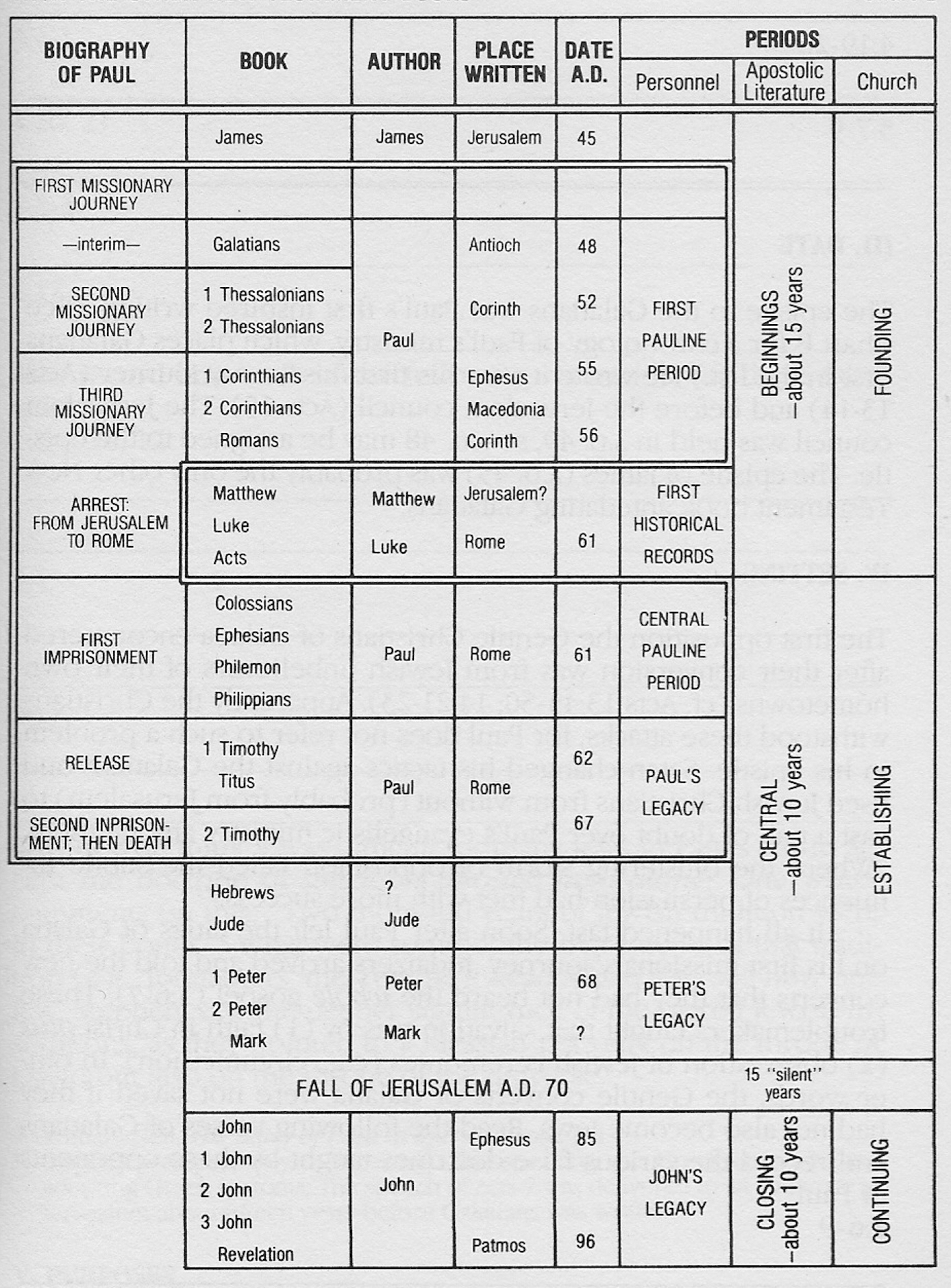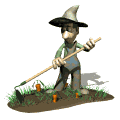INTRODUCTION TO COLOSSIANS
Most from the book
NIV Study Bible - The Holy Bible, New International Version
Zondervan Bible Publishers
Copyright by International Bible Society
Copyright © 1973, 1978, 1984
QUESTIONS TO STUDY ONE
OUTLINE
MAP OF PAUL'S FIRST AND SECOND MISSIONARY TRIPS
MAP OF PAUL'S THIRD MISSIONARY TRIP

Before analyzing the text of any book of the Bible, it is well to learn the historical background. Also, it is best to make a mountain top view of its general contents.
- TIME AND AUTHOR
- The following is a time line:
- Paul was arrested in Jerusalem (57 A.D., Acts 21:33)
- Paul is transferred to Rome to stand at trial before Caesar (59-60 A.D., Acts 25:10-28:16)
- Paul awaits for trial in Rome under house arrest. Acts is penned by Luke who was with Paul. (60-61 A.D. Acts 28:17 to end)
- Paul underwent his first Roman imprisonment during which he wrote Ephesians, Philippians, Philemon, and this letter. (61-62 A.D.)
- Paul was released from prison. (between 62 and 64 A.D.)
- That Colossians is a genuine letter of Paul is not usually disputed. In the early church, all who speak on the subject of authorship ascribe it to Paul. In the 19th century, however, some thought that the heresy refuted in ch. 2 was second-century Gnosticism. But a careful analysis of ch. 2 shows that the heresy there referred to is noticeably less developed than the Gnosticism of leading Gnostic teachers of the second and third centuries. Also, the seeds of what later became the full-blown Gnosticism of the second century were present in the first century and already making inroads into the churches. Consequently, it is not necessary to date Colossians in the second century at a time too late for Paul to have written the letter.
- Instead, it is to be dated during Paul's first imprisonment in Rome, where he spent at least two years under house arrest (see Ac 28: 16-31). Some have argued that Paul wrote Colossians from Ephesus or Caesarea, but most of the evidence favors Rome as the place where Paul penned all the Prison Letters (Ephesians, Colossians, Philippians and Philemon).
- PLACE: COLOSSE-The Town and the Church
- Several hundred years before Paul's day, Colosse had been a leading city in Asia Minor (present-day Turkey). It was located on the Lycus River and on the great east-west trade route leading from Ephesus on the Aegean Sea to the Euphrates River. By the first century A.D. Colosse was diminished to a second-rate market town, which had been surpassed long ago in power and importance by the neighboring towns of Laodicea and Hierapolis (see 4: 13).
- What gave Colosse NT importance was the fact that, during Paul's three-year ministry in Ephesus, Epaphras had been converted and had carried the gospel to Colosse (ef. 1:7-8; Ac 19: 10). The young church that resulted then became the target of heretical attack, which led to Epaphras' visit to Paul in Rome and ultimately to the penning of the Colossian letter.
- Perhaps as a result of the efforts of Epaphras or other converts of Paul, Christian churches had also been established in Laodicea and Hierapolis. Some of them were house churches (see 4: 15; Phm 2). Most likely all of them were primarily Gentile. Epaphras appears to be the lead pastor (Latin for shepherd) of one if not all three congregations. Paul's letter to Philemon (one chapter) should be studied after this letter.
- PURPOSE - The Colossian Heresy
- Paul never explicitly describes the false teaching he opposes in the Colossian letter. The nature of the heresy must be inferred from statements he made in opposition to the false teachers. An analysis of his refutation suggests that the heresy was diverse in nature. Some of the elements of its teachings were:
- Ceremonials. It held to strict rules about the kinds of permissible food and drink, religious festivals (2:16-17) and circumcision (2:11; 3:11).
- Asceticism. "Do not handle! Do not taste! Do not touch!" (2:21; ef.2:23).
- Angel worship. See 2:18.
- Deprecation of Christ. This is implied in Paul's stress on the supremacy of Christ (1:15-20; 2:2-3,9).
- Secret knowledge. The Gnostics boasted of this (see 2: 18 and Paul's emphasis in 2 :2-3 on Christ, "in whom are hidden all the treasures of wisdom").
- Reliance on human wisdom and tradition. See 2:4,8.
- The elements seem to fall into two categories, Jewish and Gnostic. It is likely, therefore, that the Colossian heresy was a mixture of an extreme form of Judaism and an early stage of Gnosticism (see Introduction to I John: Gnosticism; see also note on 2:23).
As you conclude your overview of Colossians, ponder over the key verses 1:19-20: "For God was pleased to have all his fullness dwell in him, and through him to reconcile to himself all things, whether things on earth or things in heaven, by making peace through his blood, shed on the cross."
STUDY 1 QUESTIONS
STUDY 1 COMMENTS
|
























